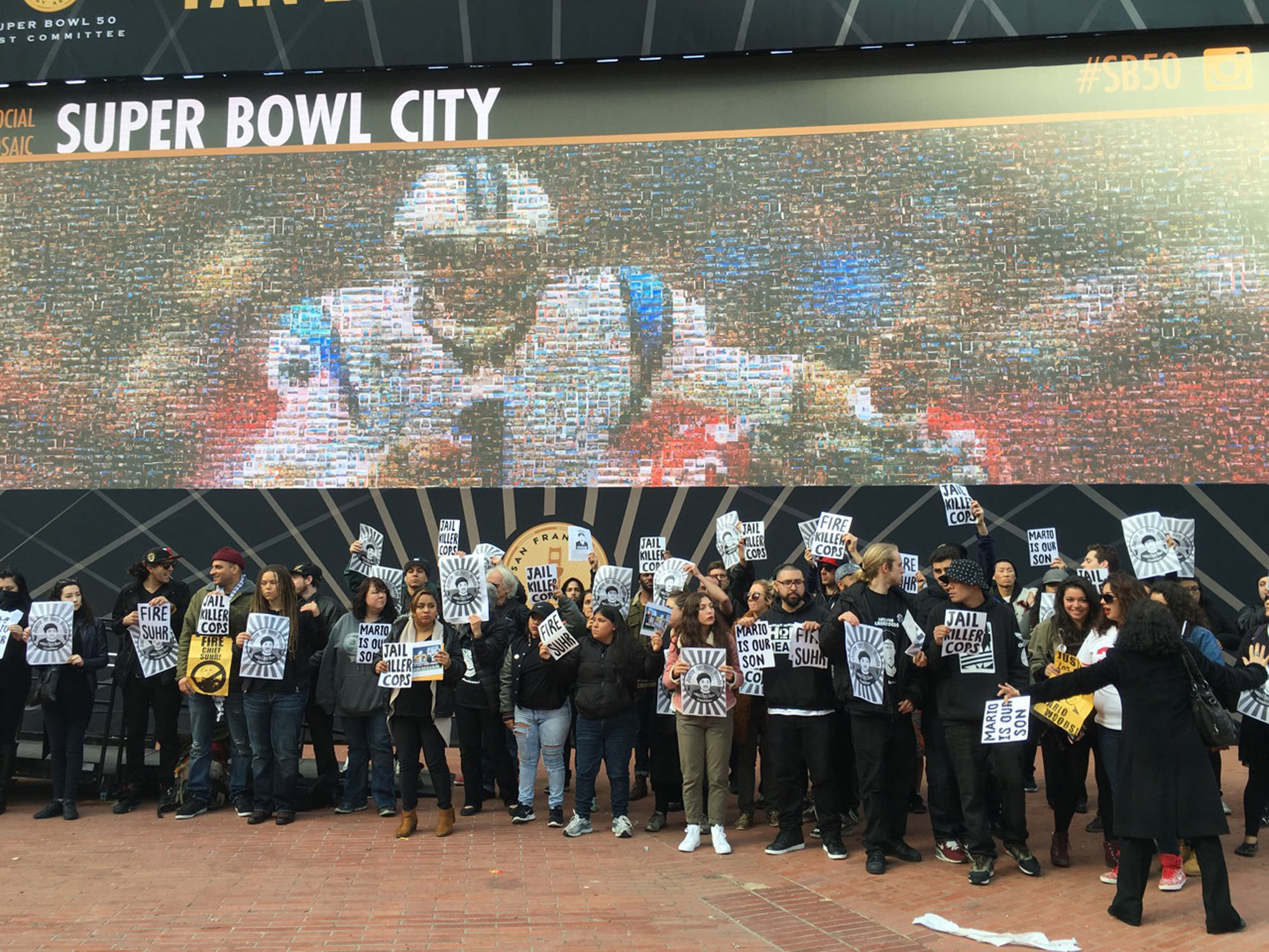by Josh Wolf
San Francisco’s long-standing culture of resistance continues to soldier on despite the rapidly changing demographics of the city.
On Jan. 30, the opening day of Super Bowl City, a diverse contingent of Bay Area activists marched down Market Street surrounded by scores of police officers. Despite efforts by law enforcement to prevent the protestors from reaching the celebration, the crowd maneuvered around police barricades by dispersing into the surrounding streets before reassembling inside the gates of Super Bowl city.
Mario Woods was gunned down by the San Francisco Police last year in early December. Following his death, a new coalition formed to organize against police violence. Since then the Justice for Mario Woods Coalition has held numerous community forums with both elected and appointed government officials.
The group organized a protest to disrupt Mayor Ed Lee’s inauguration earlier this month and has become a regular presence at City Hall.
The group plans to continue fighting until its three demands are met. They are demanding that Chief Greg Suhr either resign or be fired, that District Attorney George Gascón charge the officers involved in Woods’ shooting with murder, and the group is also demanding an independent investigation. While preliminary steps are already underway for the U.S. Department of Justice to investigate Wood’s death, members of the coalition voiced concerns on Saturday that this may never materialize.
Saturday’s march marked the first day of Super Bowl City, a sprawling fenced-off festival covering multiple downtown blocks near the Embarcadero Center and the Ferry Building. Although Super Bowl city is free to enter, visitors are required to enter through one of four entrances and have their bags searched while they walk through a metal detector to gain entrance.
Within minutes of the protestors stepping off Union Square and into the street, the police declared the event an unpermitted march and used their loudspeaker to order everyone onto the sidewalk. Undeterred, the march continued down Powell Street and onto Market Street as they headed toward Super Bowl City.
The police periodically repeated their demands for the protestors to return to the sidewalk, but the calls continued to be ignored as the police continued along the route with officers flanking both sides of the demonstrators.
But when the march approached the intersection of Market and Fremont Street, a block from the main entrance to Super Bowl City, the police moved in to stop the protestors from continuing forward. Just before the front of the crowd reached the intersection, a line of police formed across Market and refused to let anyone, including several confused tourists, to cross Fremont Street.
With the protestors now surrounded on three sides by police, an officer once demanded over the loudspeaker for people to return to the sidewalk. But this time, instead of ignoring the order, someone from the coalition proclaimed that people would be allowed to continue toward Super Bowl City if everyone got off the street. Within a few minutes only the media and the police remained in the street, but the passage forward remained blocked by a wall of police.
People began whispering plans to quietly disperse and then reassemble at the back of Super Bowl City near CNN’s booth. Those whispers then became a roar when the plan was announced over the loudspeaker, alerting the police to their plan, but no way to intervene.
Slowly people from the protest made their way through security and found the predetermined meet-up location. Eventually about 100 people from the original group reconvened and decided to stand together in silent protest and hold up their signs of support for Mario Woods and calling for the firing of Chief Suhr.
Some Super Bowl fans stopped to look and take pictures of the demonstration; some even started conversations with protestors. At least one passer-by took a sign and joined the contingent, but others averted their eyes and turned their backs away from the protest as they walked past it.
After standing in vigil outside of the giant CNN sign, the group continued their demonstration at a couple more locations in Super Bowl City, including in front of the iconic giant 50 that was installed specifically for photo opportunities.
Saturday’s demonstration is the first of several protests planned to harness the international attention created by San Francisco hosting the Super Bowl festivities in the week preceding the big game, which takes place in Santa Clara on Sunday, Feb. 7. More detail about the upcoming protests can be found at www.sossanfrancisco.com.
The NFL will host its own events and entertainment as part of Super Bowl City, and a schedule for those events can be found at www.sfbaysuperbowl.com.



